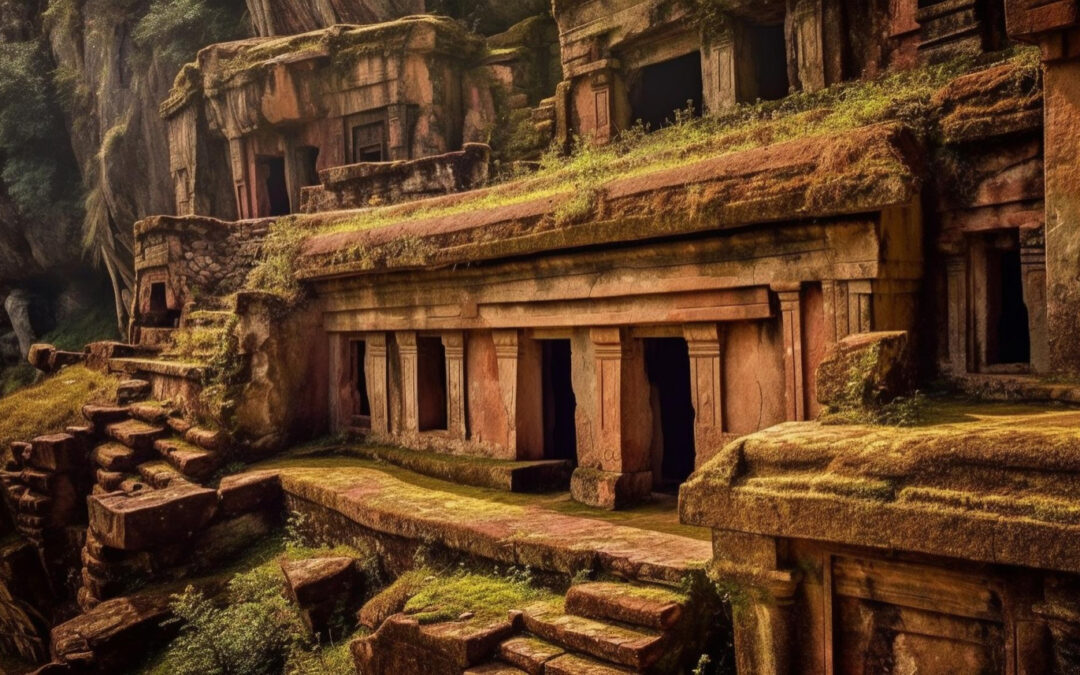India, a land steeped in history and culture, boasts an array of architectural wonders that beckon travelers from around the globe. Among its most mesmerizing treasures are the Ajanta and Ellora Caves, two UNESCO World Heritage Sites nestled in the heart of Maharashtra. Embarking on a journey to these ancient marvels is akin to stepping back in time, where each cavernous corridor whispers tales of bygone eras and artistic excellence.
Ajanta Caves: A Testament to Artistry
Dating back to the 2nd century BCE, the Ajanta Caves represent the zenith of ancient Indian artistry and craftsmanship. Carved into a horseshoe-shaped cliff along the Waghora River, these 30 rock-cut Buddhist cave monuments are renowned for their exquisite frescoes, sculptures, and architectural finesse.
As you step into the dimly lit chambers of Ajanta, you are greeted by a profusion of vibrant murals depicting scenes from the life of Buddha, Jataka tales, and celestial beings. The play of light and shadow adds an ethereal quality to these ancient paintings, transporting visitors to a realm where spirituality and artistic expression converge seamlessly.
Wandering through the labyrinthine passages of Ajanta, one cannot help but marvel at the sheer dedication and skill of the artisans who painstakingly carved these masterpieces out of solid rock. From the majestic Chaitya halls adorned with intricately carved pillars to the serene viharas meant for meditation, each cave tells a story of devotion and artistic brilliance.
Ellora Caves: Where Faith and Architecture Merge
A short distance from Ajanta lies the Ellora Caves, a testament to the harmonious coexistence of Hinduism, Buddhism, and Jainism. Spanning a period of over five centuries, these 34 caves represent the pinnacle of rock-cut architecture in India.
The Ellora complex is divided into three distinct groups – the Buddhist caves (caves 1-12), the Hindu caves (caves 13-29), and the Jain caves (caves 30-34). Each group showcases a unique blend of religious motifs, architectural styles, and cultural influences, reflecting the rich tapestry of India’s diverse heritage.
Among the highlights of Ellora is the awe-inspiring Kailasa Temple (cave 16), dedicated to Lord Shiva. Carved out of a single monolithic rock, this magnificent structure stands as a testament to human ingenuity and devotion. The intricate detailing of its facades, the ornately sculpted panels, and the imposing vimana are a sight to behold, leaving visitors spellbound by its sheer grandeur.
Tips for Travelers
For those planning a visit to Ajanta and Ellora Caves, here are a few tips to enhance your experience:
- Timing: The caves are best visited during the cooler months of October to March when the weather is pleasant for exploration.
- Guided Tours: Consider hiring a knowledgeable guide who can provide insights into the history, architecture, and significance of each cave.
- Footwear: Wear comfortable footwear as you’ll be walking and climbing stairs within the cave complexes.
- Photography: While photography is allowed in most areas, be mindful of the restrictions in certain caves to preserve the delicate artwork.
- Respect: Remember that these sites hold religious significance for many, so maintain decorum and respect the sanctity of the surroundings.
Conclusion
A journey to Ajanta and Ellora Caves is not just a sightseeing excursion; it’s a voyage through India’s rich cultural heritage and artistic legacy. As you traverse the dimly lit corridors, adorned with exquisite sculptures and vibrant murals, you can’t help but feel a profound sense of awe and reverence for the craftsmen who shaped these timeless marvels.
So, pack your bags, embark on this unforgettable odyssey, and let the ancient stones of Ajanta and Ellora whisper their tales of bygone glory and artistic mastery, leaving an indelible imprint on your soul.

